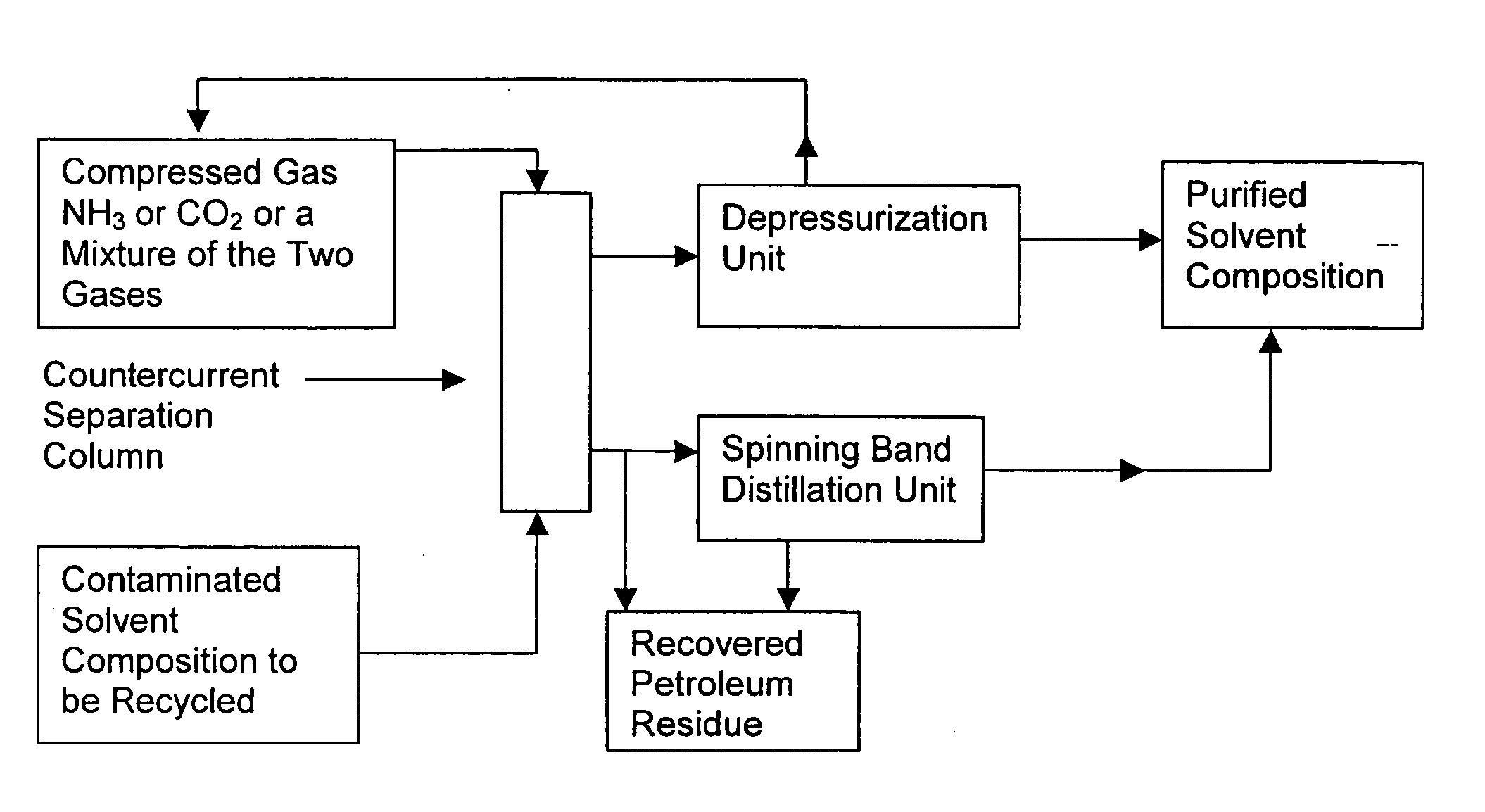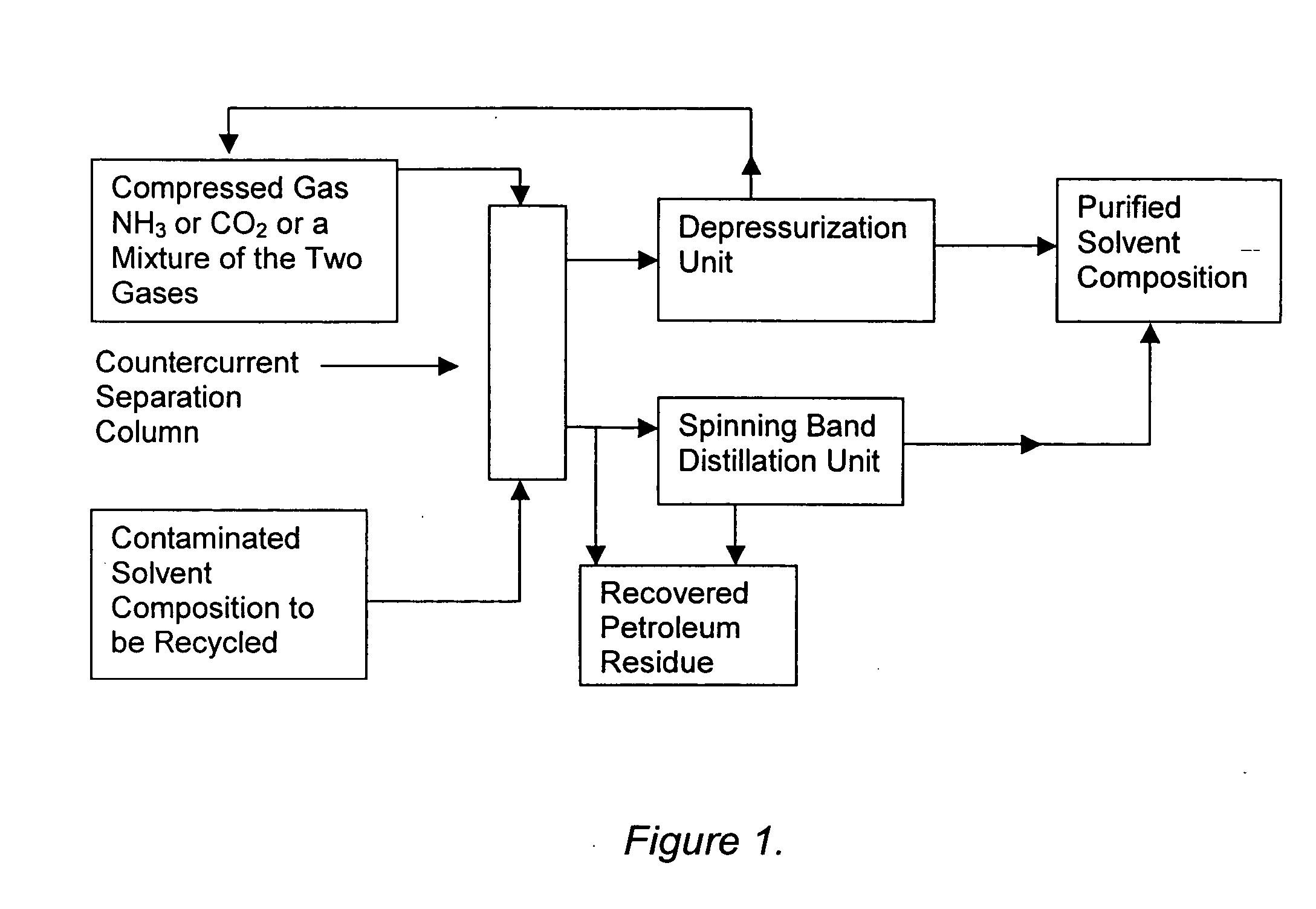Solvent compositions for removing petroleum residue from a substrate and methods of use thereof
a technology of solvent composition and petroleum residue, which is applied in the preparation of detergent mixture compositions, detergent compounding agents, cleaning using liquids, etc., can solve the problems of diesel fuel-based solvent use, equipment used in petroleum and chemical processing, storage and transportation, and long-term problem of petroleum residue build-up,
- Summary
- Abstract
- Description
- Claims
- Application Information
AI Technical Summary
Problems solved by technology
Method used
Image
Examples
example 1
Performance Test Method
[0126] The efficiency of the presently disclosed solvent compositions to remove petroleum residue (e.g., bitumen) from a substrate was quantified by the following test methods: [0127] Step 1. Number each aluminum dish and determine its weight. The dishes used are FISHERBRAND™ Aluminum Weighing Dishes (Fisher Scientific, Pittsburgh, Pa.). The catalog number is 08-732 and the capacity of each dish is 42 mL. [0128] Step 2. Apply 1.5 g of emulsified asphalt (CRS-2) into the standard aluminum dish, ensuring that asphalt emulsion fully covers the bottom surface area of the dish. [0129] Step 3. Heat the aluminum dish, with asphalt emulsion, for 24 hours at the temperature of 140° F. (60° C.). [0130] Step 4. Remove the dish after 24 hours and cool it to room temperature. Determine the weight of the dish and calculate the weight of residual asphalt. [0131] Step 5. Apply 0.5 g of solvent into the dish by dropper. Make sure that the asphalt remains completely submerged ...
example 2
Bitumen Removal Obtained from Different Solvent Compositions
[0136] The data presented in this Example were developed using the approaches and methods described in Example 1. Representative solvent compositions and their efficiency for removing bitumen according to the method described in Example 1 are presented in Table 2.
TABLE 2Bitumen Removal Obtained from Different Solvent Compositions.Average EfficiencyAverage Efficiency ValueValue(% Bitumen Removed) Plus(% Bitumen2.811 From DieselSolvent Composition*Removed)**Measurements***Diesel Fuel13.1916.0050% IPB + 40% Bio + 10%18.5021.31Butyl Carbitol40% IPB + 50% Bio + 10%16.8919.70Butyl Carbitol (10% Water)40% IPB (10% Witconol ™17.8220.63CO 360) + 50% Bio + 10%Butyl Carbitol (10% Water)40% IPB (20% Witconol ™17.8820.69CO 360) + 50% Bio + 10%Butyl Carbitol (10% Water)40% IPB + 50% Bio + 10%17.2920.10Butyl Carbitol (20% Water)40% IPB + 0.4% Witconol ™17.2920.10CO 360) + 50% Bio + 10%Butyl Carbitol (20% Water)40% IPB + 0.8% Witconol ™...
PUM
| Property | Measurement | Unit |
|---|---|---|
| flash point | aaaaa | aaaaa |
| boiling point | aaaaa | aaaaa |
| boiling point | aaaaa | aaaaa |
Abstract
Description
Claims
Application Information
 Login to View More
Login to View More - R&D
- Intellectual Property
- Life Sciences
- Materials
- Tech Scout
- Unparalleled Data Quality
- Higher Quality Content
- 60% Fewer Hallucinations
Browse by: Latest US Patents, China's latest patents, Technical Efficacy Thesaurus, Application Domain, Technology Topic, Popular Technical Reports.
© 2025 PatSnap. All rights reserved.Legal|Privacy policy|Modern Slavery Act Transparency Statement|Sitemap|About US| Contact US: help@patsnap.com



